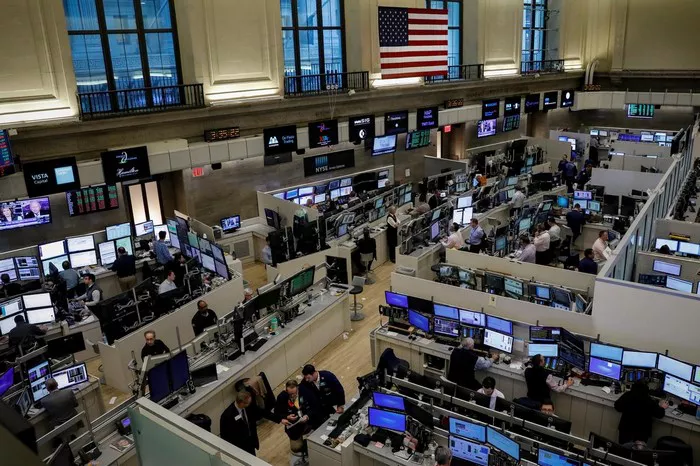Stock exchanges play a crucial role in the global economy by providing a platform for buying and selling securities, facilitating capital formation, and enabling investors to participate in the ownership of publicly traded companies. Whether you’re a novice investor or a seasoned professional, understanding how stock exchanges work is essential for making informed investment decisions. In this guide, we’ll delve into the inner workings of stock exchanges, covering their history, structure, functions, and the mechanics of trading.
A Brief History of Stock Exchanges
Stock exchanges have a rich history dating back centuries. The first stock exchange emerged in the 17th century, with the Amsterdam Stock Exchange established in 1602 to facilitate the trading of shares of the Dutch East India Company. Over time, stock exchanges proliferated globally, with notable examples including the London Stock Exchange (founded in 1801), the New York Stock Exchange (founded in 1792), and the Tokyo Stock Exchange (founded in 1878).
Initially, trading occurred in physical trading floors where brokers and traders would gather to execute transactions. However, technological advancements, particularly in the latter half of the 20th century, led to the automation and digitization of trading processes, transforming stock exchanges into electronic marketplaces accessible from anywhere with an internet connection.
Structure of Stock Exchanges
Stock exchanges operate as centralized marketplaces where buyers and sellers come together to trade securities. They are typically organized as corporations or non-profit entities governed by regulatory bodies to ensure fair and transparent trading practices. Key components of a stock exchange’s structure include:
1. Listed Securities: Stock exchanges list a wide range of securities, including stocks, bonds, exchange-traded funds (ETFs), and derivatives. Companies seeking to raise capital through the issuance of stocks or bonds must meet listing requirements set by the exchange.
2. Market Participants: Various participants interact within the stock exchange ecosystem, including investors, brokers, market makers, and regulatory authorities. Investors buy and sell securities through brokerage firms, which act as intermediaries facilitating transactions.
3. Trading Systems: Modern stock exchanges utilize electronic trading systems to match buy and sell orders efficiently. These systems employ algorithms and trading protocols to execute transactions swiftly while maintaining market liquidity and stability.
4. Regulatory Oversight: Stock exchanges are subject to regulatory oversight by government agencies or self-regulatory organizations (SROs) to ensure compliance with securities laws and market regulations. Regulatory bodies monitor trading activities, enforce rules, and investigate instances of market manipulation or misconduct.
Functions of Stock Exchanges
Stock exchanges perform several essential functions that contribute to the efficient functioning of capital markets:
1. Facilitating Capital Formation: By providing a platform for companies to raise capital through the issuance of stocks and bonds, stock exchanges play a vital role in channeling savings into productive investments. Initial public offerings (IPOs) allow companies to access public capital markets and fund expansion initiatives.
2. Price Discovery: Stock exchanges facilitate price discovery by bringing together buyers and sellers to determine the equilibrium price of securities through the forces of supply and demand. Continuous trading and transparent pricing mechanisms ensure that market prices reflect all available information.
3. Enhancing Liquidity: Liquidity refers to the ease with which securities can be bought or sold without significantly affecting their prices. Stock exchanges enhance liquidity by providing a centralized marketplace where investors can execute transactions quickly and at fair market prices.
4. Risk Management: Stock exchanges implement risk management measures to mitigate systemic risks and ensure the stability of financial markets. Circuit breakers, trading halts, and margin requirements are examples of mechanisms designed to prevent excessive volatility and protect investors from market disruptions.
5. Market Surveillance: Regulatory authorities oversee stock exchanges to monitor trading activities, detect irregularities, and maintain market integrity. Surveillance systems employ sophisticated algorithms to identify suspicious trading patterns, insider trading, and other forms of market abuse.
Mechanics of Trading
Trading on a stock exchange involves several steps, from placing orders to settlement and clearance:
1. Order Placement: Investors submit buy or sell orders to their brokerage firms through various channels, including online trading platforms, mobile apps, or traditional brokerage offices. Orders specify the security, quantity, and price at which the investor is willing to transact.
2. Order Matching: Stock exchanges match buy and sell orders based on price-time priority, where orders are executed at the best available price on a first-come, first-served basis. Electronic trading systems automatically match compatible orders, ensuring fair and efficient execution.
3. Execution and Confirmation: Once orders are matched, transactions are executed, and trade confirmations are generated by brokerage firms. Investors receive notifications confirming the details of their trades, including the security traded, price, quantity, and transaction fees.
4. Clearance and Settlement: Following execution, trades undergo clearance and settlement processes to transfer ownership of securities and funds between buyers and sellers. Clearinghouses act as intermediaries, verifying trade details, netting transactions, and ensuring that obligations are fulfilled by both parties.
5. Post-Trade Reporting: Stock exchanges provide post-trade reporting services, disseminating trade data to investors, market participants, and regulatory authorities. Trade information, including price, volume, and time stamps, is published in real-time or at specified intervals to promote market transparency.
Conclusion
Stock exchanges serve as critical infrastructure supporting the functioning of global financial markets. By providing a centralized marketplace for buying and selling securities, stock exchanges facilitate capital formation, price discovery, and liquidity enhancement. Understanding the structure and functions of stock exchanges is essential for investors seeking to navigate the complexities of the financial markets and make informed investment decisions. With technological advancements driving innovation in trading systems and regulatory frameworks evolving to address emerging challenges, stock exchanges continue to play a pivotal role in shaping the future of finance.


